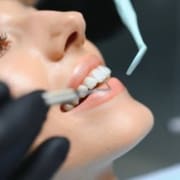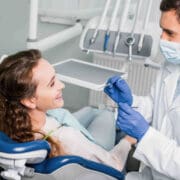Teeth Whitening vs Professional Cleaning: Know the Difference for Better Results
Are you curious about the difference between teeth whitening vs professional cleaning for achieving better results? Teeth whitening focuses on enhancing the color of your teeth, while professional cleaning targets the removal of plaque and tartar for improved oral health. Understanding these distinctions can help you make informed decisions about your dental care.
Teeth whitening vs professional cleaning
Teeth whitening vs professional cleaning is a common topic of interest for those looking to enhance their dental aesthetics. Teeth whitening is a cosmetic procedure aimed at lightening the color of your teeth, making them appear brighter and more attractive. This process typically involves the use of bleaching agents that help remove stains and discoloration from the tooth surface, resulting in a whiter smile. Unlike professional cleaning, which focuses on removing plaque and tartar for oral health, teeth whitening is primarily concerned with improving the visual appearance of your teeth.
Understanding the difference between teeth whitening vs professional cleaning can help individuals make informed decisions about their dental care. While professional cleaning is essential for maintaining oral hygiene, teeth whitening offers a solution for those seeking to improve the color of their teeth. For more information on achieving a brighter smile, you can explore our guide on Teeth Whitening for Yellow Teeth: Brighten Your Smile with Noticeable Results.
Definition of Professional Cleaning
Professional cleaning, often referred to as dental prophylaxis, is a routine procedure performed by dental hygienists to maintain oral health. This process involves the removal of plaque, tartar, and stains from the teeth, which are not easily eliminated through regular brushing and flossing. Unlike teeth whitening, which focuses on enhancing the aesthetic appearance of teeth, professional cleaning is primarily concerned with preventing oral diseases such as gingivitis and periodontitis.
In the debate of teeth whitening vs professional cleaning, it’s important to understand that each serves a distinct purpose in oral care. While professional cleaning is essential for maintaining healthy gums and teeth, teeth whitening is aimed at improving the visual appeal of your smile. For those interested in exploring more about enhancing their smile’s brightness, consider visiting Rancho Mirage Smile Whitening Services for additional information.
Purpose of Teeth Whitening
Teeth whitening vs professional cleaning are often confused, but they serve distinct purposes. Teeth whitening primarily aims to enhance the aesthetic appearance of your smile by lightening the color of your teeth. This process targets surface stains and discoloration, providing a brighter and more visually appealing look. While professional cleaning focuses on maintaining oral health by removing plaque and tartar, teeth whitening is specifically designed to address cosmetic concerns, offering a noticeable improvement in the brightness of your teeth.
Purpose of Professional Cleaning
Professional dental cleaning is essential for maintaining optimal oral health by removing plaque, tartar, and stains that regular brushing and flossing cannot eliminate. This process not only helps in preventing gum disease and cavities but also contributes to fresher breath and a brighter smile. While teeth whitening vs professional cleaning are often confused, it’s important to understand that professional cleaning focuses on overall oral hygiene rather than cosmetic enhancement. For more information, visit Cros Dental, your trusted Rancho Mirage Dentist.
Process of Teeth Whitening
Teeth whitening is a cosmetic procedure aimed at enhancing the brightness of your smile by removing stains and discoloration from the tooth surface. Unlike professional cleaning, which focuses on maintaining oral health by removing plaque and tartar, teeth whitening involves the application of bleaching agents to achieve a lighter shade. The process typically begins with an assessment of the current shade of your teeth, followed by the application of a whitening solution that penetrates the enamel to break down stains. This distinction between teeth whitening vs professional cleaning highlights the aesthetic focus of whitening procedures compared to the health-oriented goals of professional cleanings.
Process of Professional Cleaning
In the debate of teeth whitening vs professional cleaning, understanding the process of professional cleaning is crucial. This procedure typically involves a thorough examination of the oral cavity, followed by the removal of plaque and tartar using specialized tools. The dental hygienist then polishes the teeth to remove surface stains and applies fluoride treatment for added protection. Unlike teeth whitening, which focuses on enhancing the color of the teeth, professional cleaning is essential for maintaining oral health by preventing gum disease and cavities.
Benefits of Teeth Whitening
Teeth whitening offers a range of benefits that can enhance your smile and boost your confidence. Unlike professional cleaning, which primarily focuses on removing plaque and tartar to maintain oral health, teeth whitening specifically targets discoloration and stains on the enamel, resulting in a brighter and more aesthetically pleasing appearance. This cosmetic procedure can effectively address issues caused by dietary habits, aging, or lifestyle choices, providing a noticeable improvement in the overall look of your teeth. When considering teeth whitening vs professional cleaning, it’s important to recognize that while both contribute to oral care, teeth whitening is particularly beneficial for those seeking a more radiant smile.
Benefits of Professional Cleaning
When considering teeth whitening vs professional cleaning, it’s important to understand the unique benefits that professional cleaning offers. Professional cleaning not only helps in maintaining optimal oral health by removing plaque and tartar buildup but also enhances the overall appearance of your teeth. This process can lead to fresher breath and a healthier smile, contributing to improved dental hygiene. While teeth whitening focuses on enhancing the color of your teeth, professional cleaning ensures that your teeth and gums are in their best condition, providing a solid foundation for any cosmetic procedures you may consider in the future.
Duration and Frequency Comparison
When considering teeth whitening vs professional cleaning, it’s important to understand the differences in duration and frequency. Teeth whitening procedures typically require a shorter time commitment per session, often ranging from 30 minutes to an hour, depending on the method used. However, the frequency of these sessions can vary based on individual needs and desired results. In contrast, professional dental cleanings are generally recommended every six months and usually last about an hour. This regular schedule helps maintain oral health by removing plaque and tartar buildup. Understanding these differences can help individuals make informed decisions about their dental care routines.
Conclusion
Understanding the differences between teeth whitening vs professional cleaning can lead to better oral health decisions; for more information, call us at 760-444-3202 or check out our Google Maps reviews.


